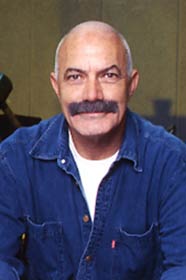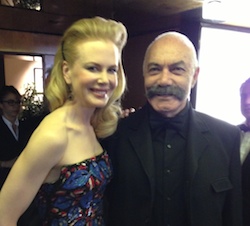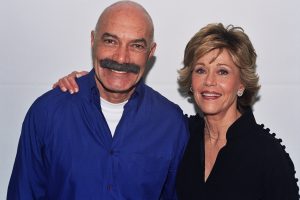Director Charlotte Wells on the Ambiguity of Her Personal Film: “I Had to Know What All the Answers Were”
Wells, who has received a DGA nomination for first-time feature directing, crafted an intimate, ambitious memory film about a young father and his daughter making the most of their shared time together.

The tender, stark story of a father-daughter vacation, plays with memory, leaving small hints about the eventual fate of its protagonist but leaving things mostly up to the audience to fill in.
As the writer-director, Charlotte Wells has garnered a reputation for her devotion to that element of mystery. She keeps a hard line when it comes to over-explaining Aftersun‘s ending, resisting the urge to offer viewers the answers they often seek. “I will never deny somebody’s experience of the film,” says Wells. “I think the loss at the end resonates just as deeply for everyone, regardless of how you’re filling in the gaps in the story.”
Wells spoke about what the positive reception has been like, what she considers the most pivotal scenes and how she chose the movie’s crucial musical moments.
Long, slow burn from its May debut at Cannes in May?
When I saw Aftersun at the Telluride Film Festival, it was the first nice experience I had watching — and it was clear that there was no need to watch it, perhaps ever again. I did do a director’s commentary, which was completely surreal, but I don’t count that as watching so much as reliving what was happening beyond the frame. I’ve been speaking about the film so much that it strangely starts to feel like some abstraction that isn’t real. But during Telluride, I was reminded of it as a tangible thing again, and I’ve tried to hold that feeling with me since.
I had to know what all the answers were, I had to have clear sense of my intention to make this film. I couldn’t be ambiguous with myself about what was happening or the film wouldn’t work — for anybody. But I knew I was creating it in such a way that reads would vary. Some people’s responses have been almost exactly aligned with my intentions.
Film slowly reveals Calum’s inner turmoil
Every viewer has a different moment of realization. It’s hard not to think about how I constructed it. That first scene of Calum smoking on the balcony — what’s interesting to me from the filmmaker point of view is we chose that take really late in the process. It’s such an important moment in establishing the language of the film and indicating, “Lean in here. Watch what’s happening. Don’t be afraid to look further.” When we went to Cannes and did the tech check, when Sophie’s breath crescendos during the scene, I remember thinking that it was too quiet. I found myself physically leaning out of my seat to hear it. And then I thought, “Oh, that was my intention.”
Original version of that scene?
I originally imagined it would cut to a shot of Calum standing on the railing outside, smoking a cigarette. It was a very precarious image, with him perched outrageously on the third-floor balcony. It was one of the earliest images I had in mind for the film, which is why it was so hard for me to let it go for the one we did use. That railing scene, which now comes a little bit later in the story, is to me the further unveiling of Calum’s private struggle. And then when he spits into the mirror, that is the moment when it becomes irrefutable. Up until that point, you could explain away his behavior: He can’t sleep because it’s hot, he’s somewhere new. But the moment he spits, rationalizations become difficult to justify.

His daughter describes symptoms of depression?
Her descriptions could be an indicator of a lifelong thing, or she could just be a kid who had a great day and now the adrenaline’s gone and she’s crashing. I had to constantly calibrate everything so that it didn’t push the narrative one way or the other. But that’s the kind of question that will become informed by every viewer’s own life experience.
Key musical scene: Sophie singing depressing rendition of R.E.M.’s “Losing My Religion”
Getting permission for the music is a very real thing. Our music supervisor had originally asked me to come up with alternatives for “Losing My Religion,” which was a problem because I felt that nothing else would be remotely appropriate. The lyrics in that scene are going to be read into, it’s completely unavoidable. I had chosen that song instinctively; it was probably the first song I ever knew all the words to at age 5 or 6. That’s a completely absurd image now, but it’s the product of having had young parents, I’m sure. But it was a song I have strong emotions about, that I connect to my dad and I’m really grateful we got it. I also have to give credit to Frankie because we only had one and a half takes to get it. She hates that song, she wouldn’t rehearse it, and I had to sing it to try and encourage her to come onstage for the shot. Paul reminded me of that recently.
When we filmed that scene in the warehouse, we used proper rave music but just to help the actors. I had been aware of this stripped-back version of “Under Pressure,” where you can hear David Bowie and Freddie Mercury really going for each other, and I pulled that into the edit — I don’t even know why I did it. I needed something to match the rhythm of the dance scene and it irrefutably worked. It’s an outrageous exposition. It’s a heart-on-your-sleeve moment. But because we’d avoided that in the film for the most part, we figured we could get away with it. It felt like a gift to the viewer, here’s a little bit more of a hint. It gives you closure that you are correct in the direction your mind has been spiraling.










